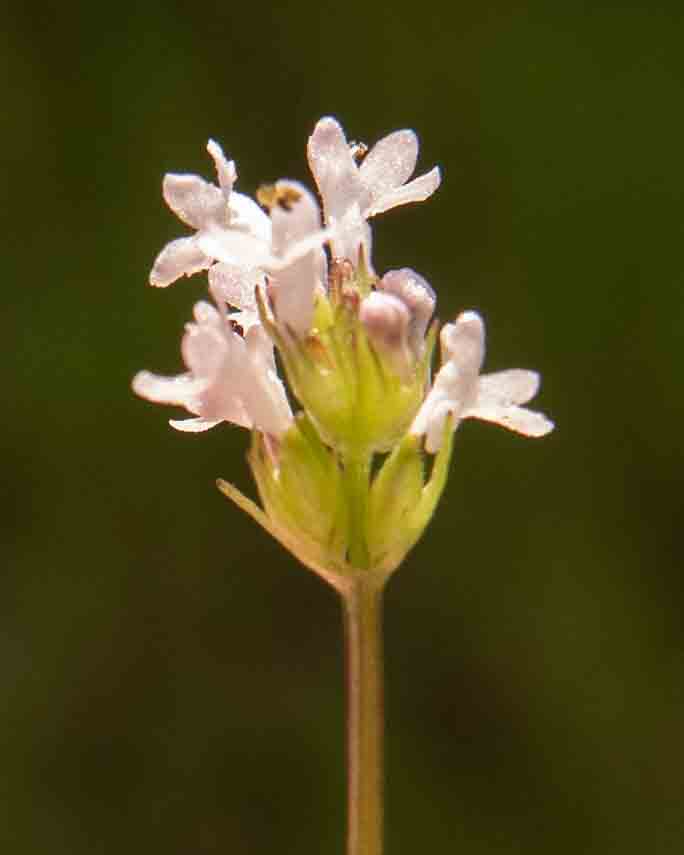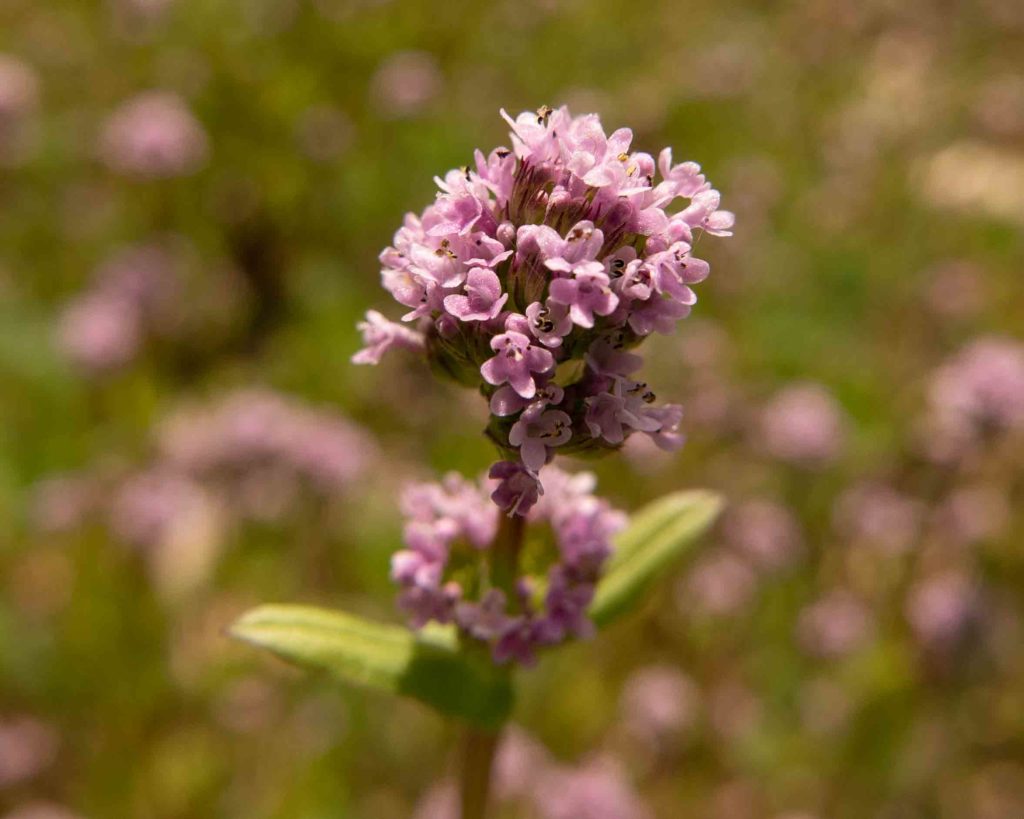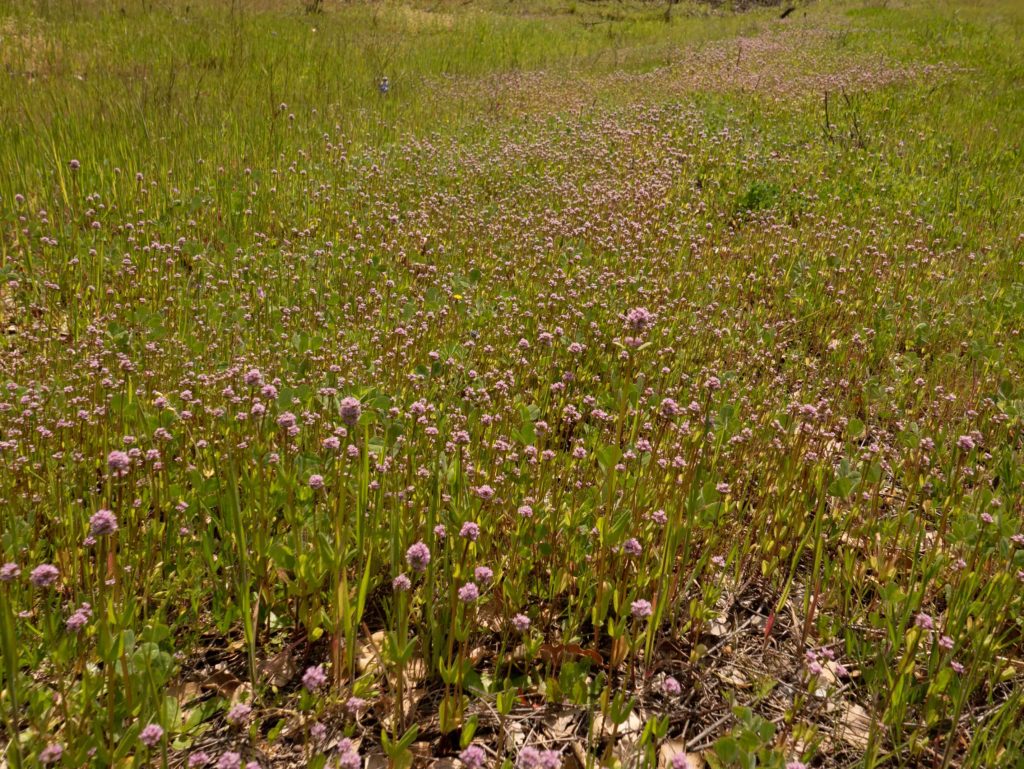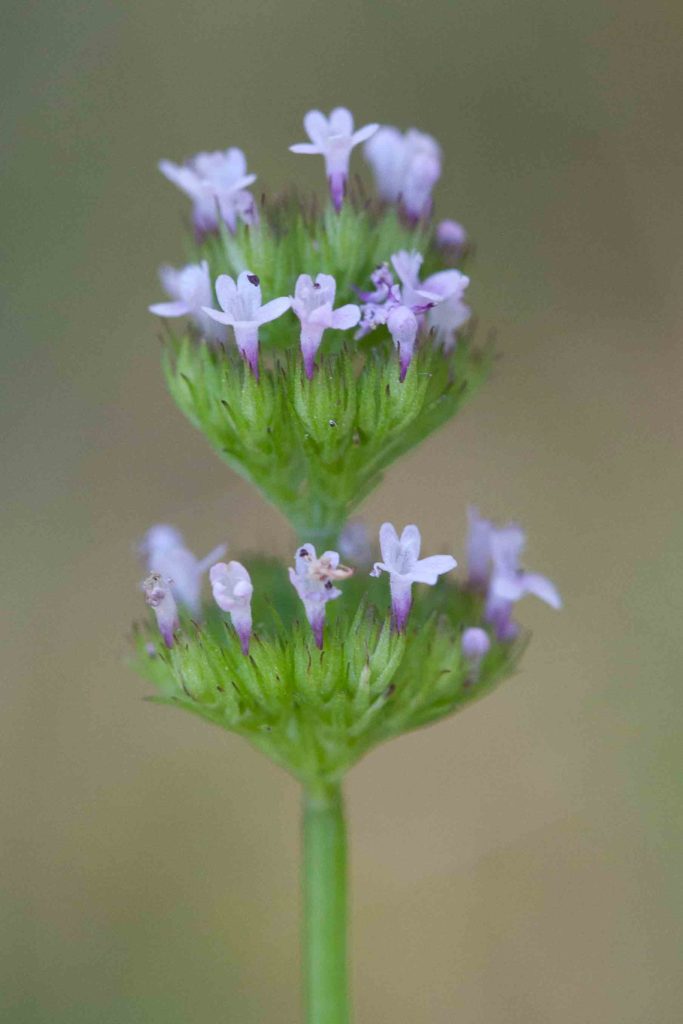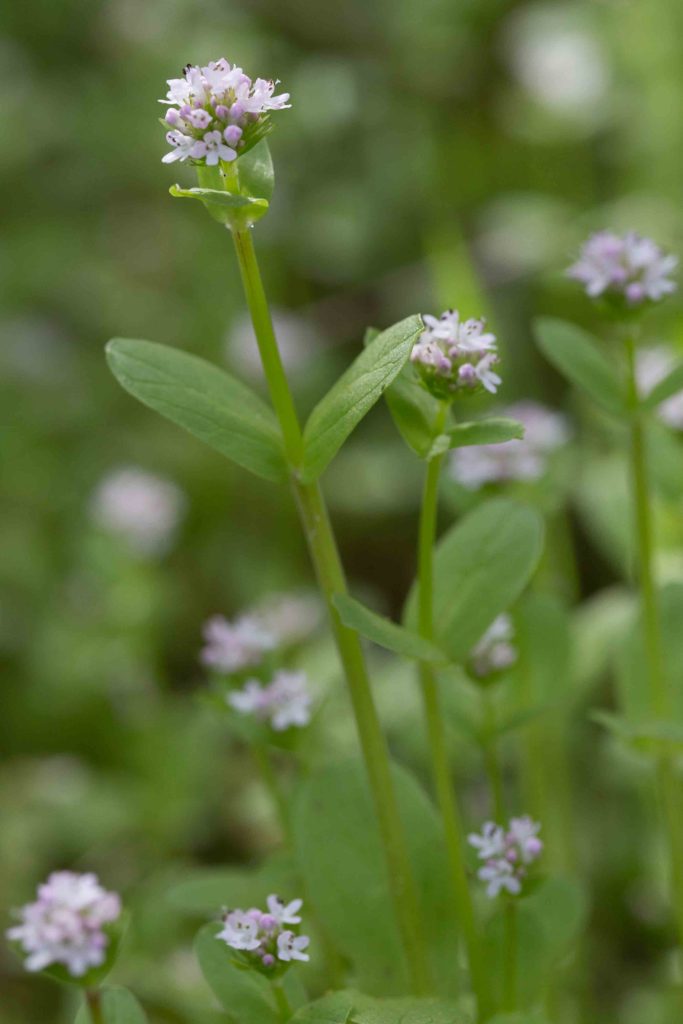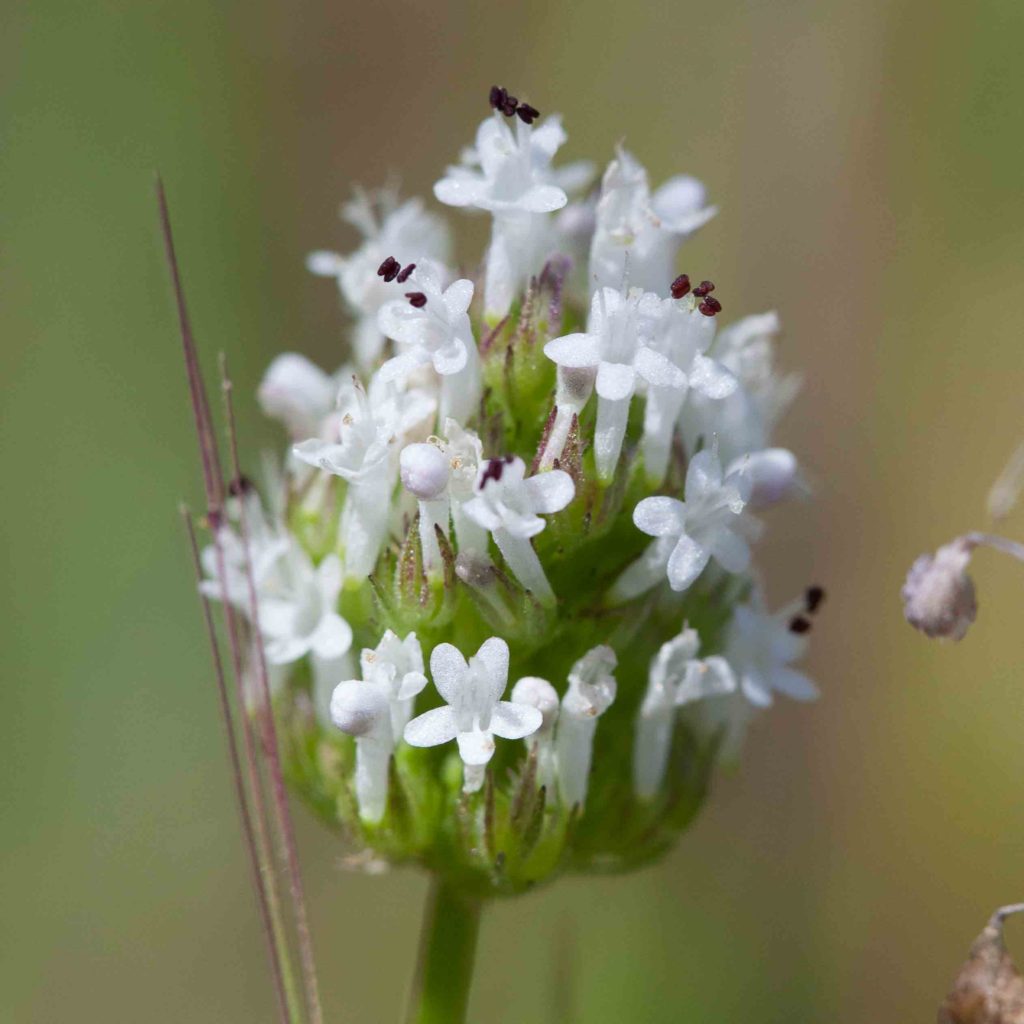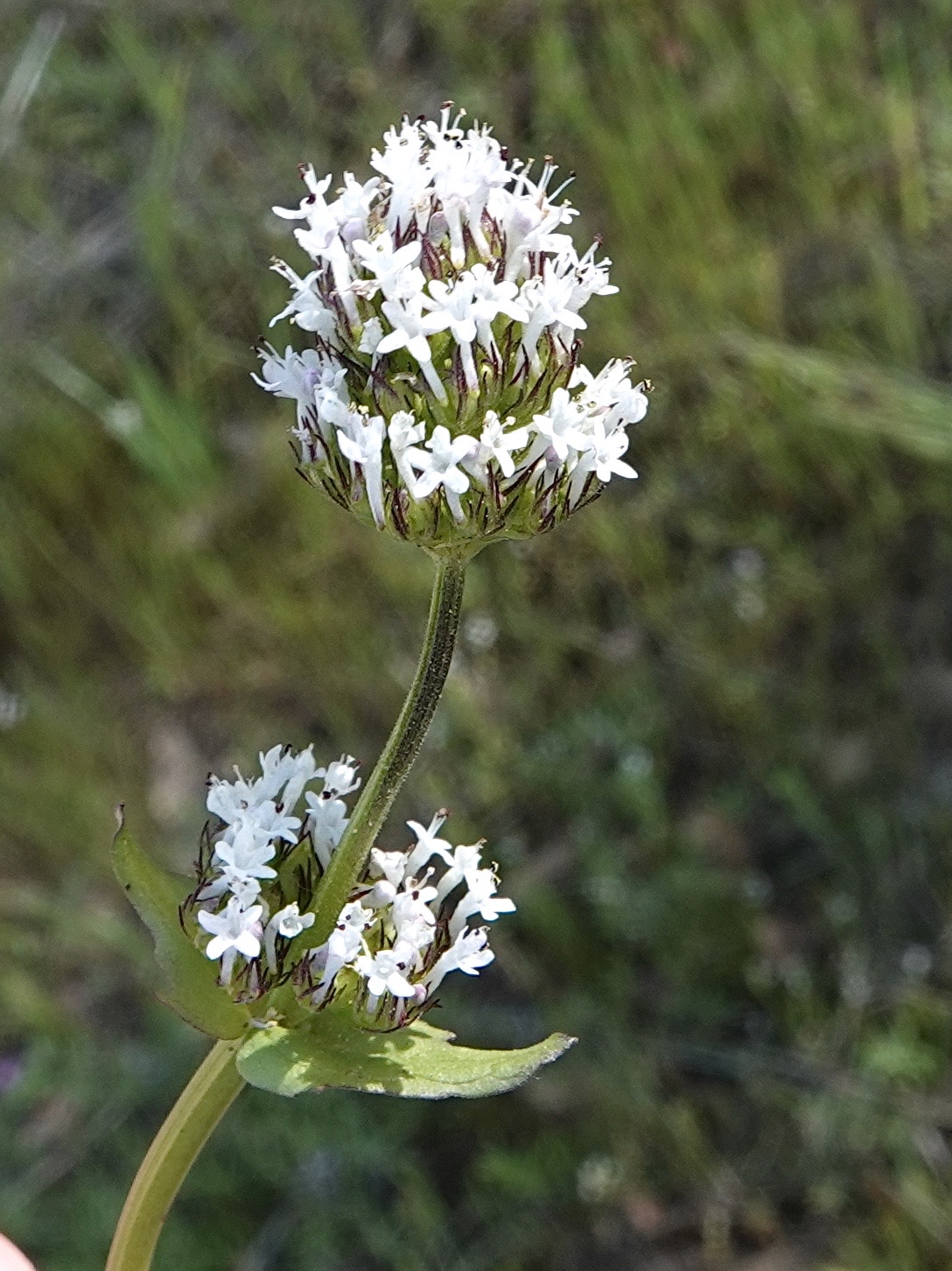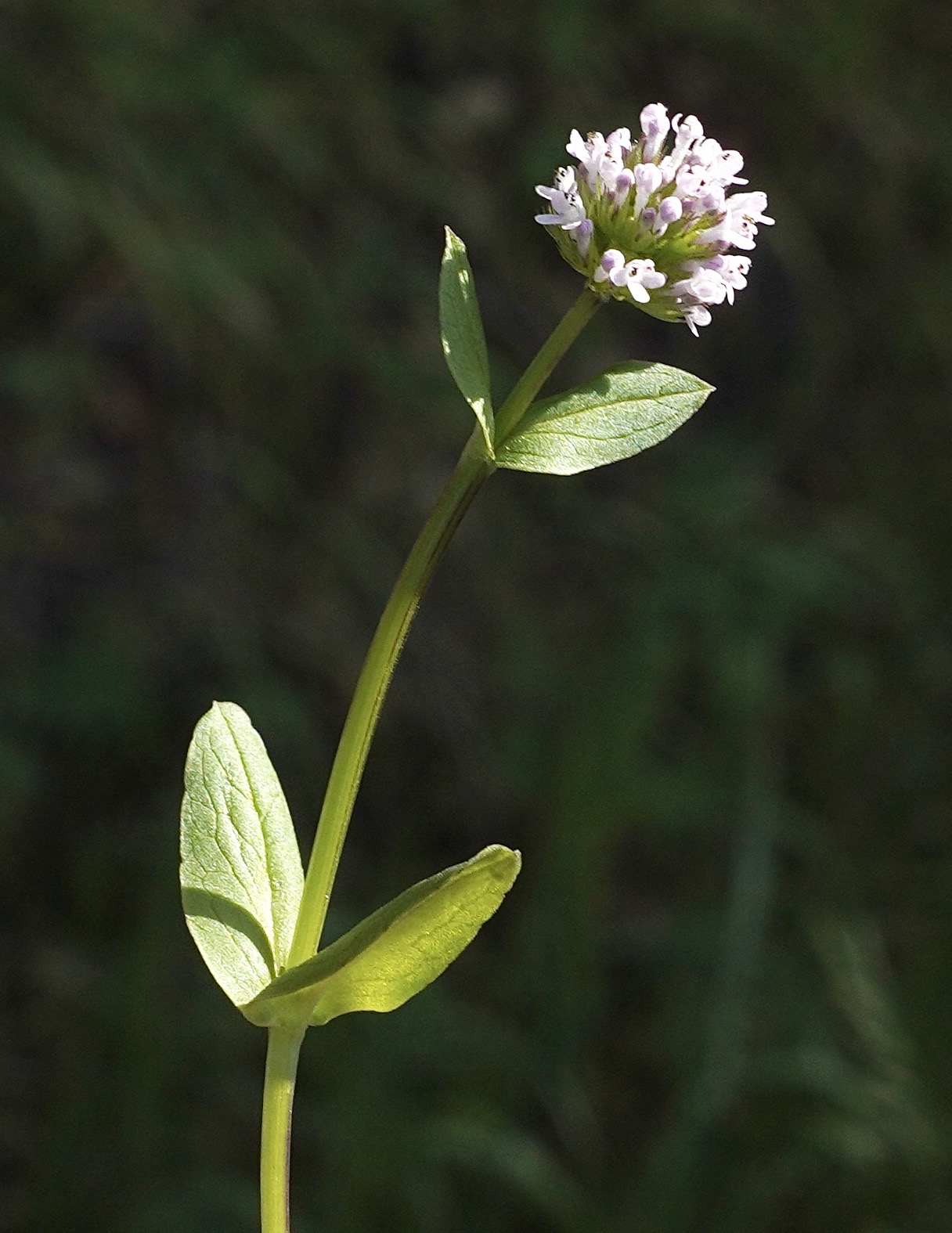Valerianaceae: Valerian Family
Shortspur Seablush – Plectritis congesta subsp. brachystemon
Blooms:
Mar–June
Plant Height:
5–80 cm
Flower Size:
Small cluster
Origin:
Native
Habitat:
Coastal bluffs, open partly-shaded slopes
Notes:
This is an inconspicuous plant, with a slender stem, and a terminal head of tiny pink flowers. Leaves are opposite and sessile. It comes in two subspecies. This one differs from subsp. congesta in that the flowers are smaller (1–3.5 mm across), white to pale pink, and with a spur that is no more than a minute swelling. As the season progresses, more heads appear above the original one. It is sometimes found in great profusion.
Seablush / Pink Plectritis – Plectritis congesta subsp. congesta
Blooms:
Mar–June
Plant Height:
5–80 cm
Flower Size:
Small cluster
Origin:
Native
Habitat:
Open slopes and grassy places
Notes:
This is an inconspicuous plant with a slender stem and a terminal head of tiny pink flowers. Leaves are opposite and sessile. It comes in two subspecies: this one has flowers 4–9.5 mm across. They may appear to have 4 petals (see photo at left), but this is not quite true. Actually, they are tubular, with 2 lips at the top. The lower lip has 3 lobes that hang down, while the upper lip is smaller, only slightly lobed. There is also a saclike spur below, which is about half the flower length. As the season progresses, more heads appear above the original one. Photo #4 by CJH.
White Plectritis – Plectritis macrocera
Blooms:
Mar–June
Plant Height:
5–80 cm
Flower Size:
Small cluster
Origin:
Native
Habitat:
Open, partly shaded slopes
Notes:
Despite its common name, the flowers of this plant may be either white or pink. Like Seablush (Plectritis congesta, see above), the flowers are in dense terminal heads. Individual flowers are very small (each 2–3.5 mm across), more or less radial, with equal-sized lobes. The spur is thick, blunt and noticeably longer than that of Seablush. Leaves are opposite, more or less spoon-shaped, with a delicate network of veining. Photos #2-3 by CJH.
